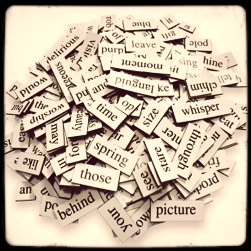Everything you think you know about social media today will be obsolete in the next five years. This assumes you are lucky. It's equally likely that everything you know will be upended in the next six months.
This concept of temporal acceptance, perhaps more than any other, is a critical component of any discussion I lead or give about social media. There is a risk in introducing the idea, even if it is the most honest observation someone can make about social media. Most people don't like change.
Instead, most people want to hear about new technologies because the tools tend to drive most discussions. They want to know what these new tools are, how to use them, and if there are any emerging techniques that will give their organization an edge. Those kinds of discussions are useful, sure.
And yet, change has always been the driver of all communication-related fields. We all know it. Marketing, advertising, public relations, and corporate communication have always been in a constant state of change. What social media has done is move them forward at a faster pace, primarily because social media has attached itself to the rapidly accelerating pace of technological advancement as opposed to a singular technology like a radio or television set. This is a space that changes in a blink.
I don't even lump technologies together anymore. I tend to define them as tools (hardware), applications (software), and networks (platforms) with each of these overlaying sectors capable of disrupting the other. In fact, there are so many that no one person can possibly keep track of them all. There are thousands upon thousands of them; ideas that could be the next disruption force in communication.
How do you reconcile this as a communicator today? You don't necessarily have to think about tools.
When people talk about social media, they mostly get it backwards.
When I spoke with the Council Of School Board Association Communicators a few days ago, I anticipated one of the first questions asked in relation to my presentation. How do you, as a communicator, prioritize which technologies to use to reach your audience? They could answer the question themselves. It was easy.
I handed out sticky notes and asked the attendees to write down two of their favorite social media networks, the ones where they spent the most time. Then, while I shared my background, one of the attendees volunteered to sort and stick their responses to the wall in clusters.
There wasn't any surprise, Facebook and Twitter were the most popular. Pinterest was a distant third, but still a noticeably pronounced cluster compared to the rest. There were several dozen others selected by one or two people, ranging from Tumblr and Goodreads to intranets and association forums.
"There is the answer," I said, pointing to the wall. "If I wanted to communicate to this group, then I would prioritize my communication presence much in the same way. Social media is driven by people, not technologies."
Assuming I already had a space to introduce new content and make announcements (blog, website, etc.), my social network assessment priorities would begin with Facebook, Twitter, and Pinterest (but not necessarily exclusively). As long as I had a plan and the right assets for each priority network, these are the ones I would tap first (e.g., if I did not have enough visual content, Pinterest would not work).
After establishing planned communication on these networks, I would learn more about the other networks on the radar, even if only one or two people selected them. Each one would be considered based upon their ability to help me effectively communicate about common objectives that the organization and specific audiences share.
Tumblr might make an excellent place for a school board association to reach students. Goodreads might be an excellent network to develop a list of books reviewed by teachers and administrators. A network like Meetup could effectively be used by administrators or unions. There are many more examples in the presentation, specific to school board associations.
Even if only a few members of an audience are already members of these niche networks, the organization may be able attract more people over time. People will mostly be willing to join any network where an organization they know or trust has developed particularly strong assets.
For example, many grandparents joined Facebook not because they liked it but because they wanted to see pictures of their grandchildren. Most people join Kickstarter and other niche networks for the same reason. They are not attracted to the platform as much as the content someone has place there (like a crowd-funding campaign).
The same holds true for all new networks and platforms that are introduced over time. Communication professionals have to assess each potential network on how effectively it can communicate common objectives. Popularity can also be assessed, but mostly as it only relates to sustainability. Networks have to reach some critical mass to survive. Not all of them do.
Building social media into communication plans and measurement.
Once communicators appreciate that social media does not exist in a vacuum, it becomes significantly more manageable. Rather than break out the entirety of social media into a separate section within a communication plan, each social media asset becomes a contact point along with any traditional communication.
In other words, if a school board association wanted to work with school administrators to establish a stronger academic foundation, social media tools like LinkedIn or Meetup would be included alongside any newsletters or grassroots outreach. Doing so also makes measurement much more effective. Using the principles behind Return On Communication, the measure of success would be based on successfully changing the academic foundation (with a secondary objective that it improves student performance).
This concept of temporal acceptance, perhaps more than any other, is a critical component of any discussion I lead or give about social media. There is a risk in introducing the idea, even if it is the most honest observation someone can make about social media. Most people don't like change.
Instead, most people want to hear about new technologies because the tools tend to drive most discussions. They want to know what these new tools are, how to use them, and if there are any emerging techniques that will give their organization an edge. Those kinds of discussions are useful, sure.
And yet, change has always been the driver of all communication-related fields. We all know it. Marketing, advertising, public relations, and corporate communication have always been in a constant state of change. What social media has done is move them forward at a faster pace, primarily because social media has attached itself to the rapidly accelerating pace of technological advancement as opposed to a singular technology like a radio or television set. This is a space that changes in a blink.
I don't even lump technologies together anymore. I tend to define them as tools (hardware), applications (software), and networks (platforms) with each of these overlaying sectors capable of disrupting the other. In fact, there are so many that no one person can possibly keep track of them all. There are thousands upon thousands of them; ideas that could be the next disruption force in communication.
How do you reconcile this as a communicator today? You don't necessarily have to think about tools.
When people talk about social media, they mostly get it backwards.
When I spoke with the Council Of School Board Association Communicators a few days ago, I anticipated one of the first questions asked in relation to my presentation. How do you, as a communicator, prioritize which technologies to use to reach your audience? They could answer the question themselves. It was easy.
There wasn't any surprise, Facebook and Twitter were the most popular. Pinterest was a distant third, but still a noticeably pronounced cluster compared to the rest. There were several dozen others selected by one or two people, ranging from Tumblr and Goodreads to intranets and association forums.
"There is the answer," I said, pointing to the wall. "If I wanted to communicate to this group, then I would prioritize my communication presence much in the same way. Social media is driven by people, not technologies."
Assuming I already had a space to introduce new content and make announcements (blog, website, etc.), my social network assessment priorities would begin with Facebook, Twitter, and Pinterest (but not necessarily exclusively). As long as I had a plan and the right assets for each priority network, these are the ones I would tap first (e.g., if I did not have enough visual content, Pinterest would not work).
After establishing planned communication on these networks, I would learn more about the other networks on the radar, even if only one or two people selected them. Each one would be considered based upon their ability to help me effectively communicate about common objectives that the organization and specific audiences share.
Tumblr might make an excellent place for a school board association to reach students. Goodreads might be an excellent network to develop a list of books reviewed by teachers and administrators. A network like Meetup could effectively be used by administrators or unions. There are many more examples in the presentation, specific to school board associations.
Even if only a few members of an audience are already members of these niche networks, the organization may be able attract more people over time. People will mostly be willing to join any network where an organization they know or trust has developed particularly strong assets.
For example, many grandparents joined Facebook not because they liked it but because they wanted to see pictures of their grandchildren. Most people join Kickstarter and other niche networks for the same reason. They are not attracted to the platform as much as the content someone has place there (like a crowd-funding campaign).
The same holds true for all new networks and platforms that are introduced over time. Communication professionals have to assess each potential network on how effectively it can communicate common objectives. Popularity can also be assessed, but mostly as it only relates to sustainability. Networks have to reach some critical mass to survive. Not all of them do.
Building social media into communication plans and measurement.
Once communicators appreciate that social media does not exist in a vacuum, it becomes significantly more manageable. Rather than break out the entirety of social media into a separate section within a communication plan, each social media asset becomes a contact point along with any traditional communication.
In other words, if a school board association wanted to work with school administrators to establish a stronger academic foundation, social media tools like LinkedIn or Meetup would be included alongside any newsletters or grassroots outreach. Doing so also makes measurement much more effective. Using the principles behind Return On Communication, the measure of success would be based on successfully changing the academic foundation (with a secondary objective that it improves student performance).















































